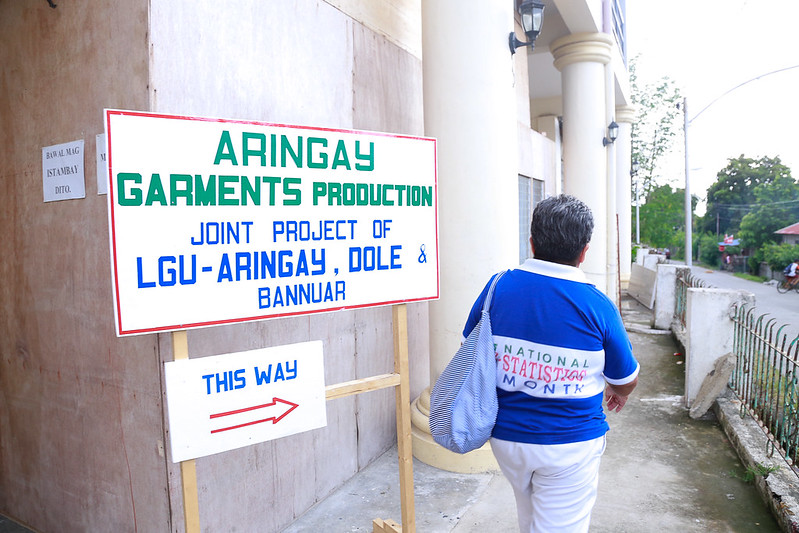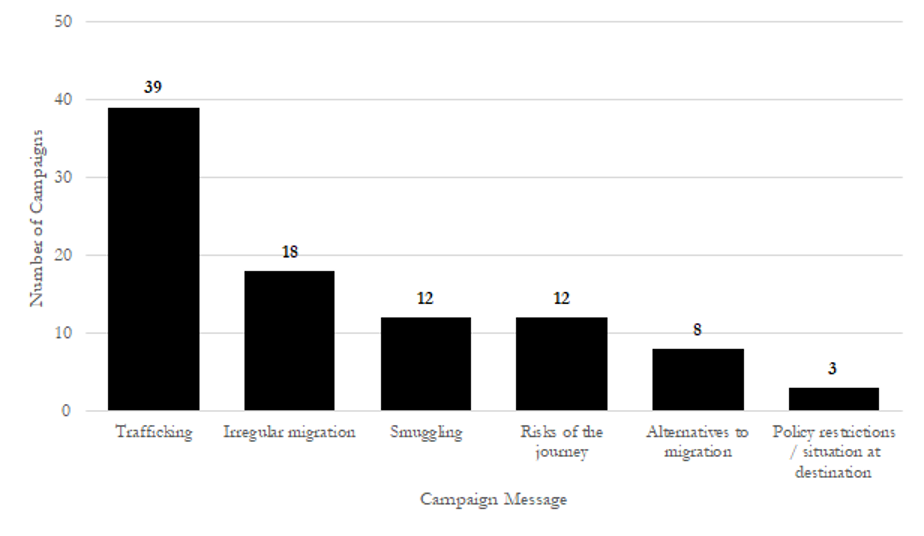Recommended
As the new US administration seeks to manage a large spike in migrants at the southern border, it has signaled plans to try to influence migrant decision-making in Central America through extensive public information campaigns.
Billions have been spent on similar campaigns around the world. But evaluations show that most potential migrants already know the dangers, and that highlighting these dangers is unlikely to substantially reduce the number of risky journeys.
Instead, the US should provide information about alternative pathways rather than risks, define specific objectives and evaluate success against these objectives, and be prepared to drop interventions should they prove to be not cost-effective.
The proposed information campaigns in El Salvador, Guatemala, and Honduras
The Biden administration is seeking to ramp up funding to Central America to address the “root causes“ of emigration—as part of an aim to invest $4 billion in the region over four years. Plans for this pledged investment featured prominently in the administration’s proposal for immigration reform legislation—unveiled by the White House in January.
One of the implicit objectives of these proposed investments is to prevent harm by curbing undocumented, or irregular, emigration and channeling potential migrants through more productive and controlled legal routes.
To achieve this objective, Section 2203 of the bicameral U.S. Citizenship Act would direct the Secretary of State (in coordination with the Secretary of Homeland Security) to “design and implement public information campaigns in El Salvador, Guatemala, Honduras, and other appropriate Central American countries” with three goals:
- To disseminate information about the potential dangers of travel to the US;
- To provide accurate information about US immigration law and policy; and
- To provide accurate information about the availability of asylum, other humanitarian protections in countries in the Western Hemisphere, and other legal means for migration.
These campaigns would be targeted at regions which are exhibiting high emigration rates, conducted in local languages, disseminated using a wide variety of media channels, and developed by USAID, the Department of Homeland Security (DHS), the Department of State, and other governmental and nongovernmental agencies.
Where information campaigns have been tried before
Awareness-raising campaigns are an established policy tool which have been conducted within the migration space for decades at an increasing rate. According to the European Migration Network, between 2015 and 2019 over 130 campaigns were implemented by the European Union and member states in an attempt to shape migration from Africa, at a total cost of over €23 million. A new report puts that figure at closer to €45 million, or 15 percent of the European Trust Fund for Africa (EUTF).
Any estimates are difficult given that most campaigns have not been evaluated. This is according to recent research by the International Organization for Migration (IOM) Global Migration Data Analysis Centre (GMDAC). Based on a broad systematic literature review, the study identified only 60 relevant campaign evaluations—most of them unable to measure impact reliably.
The campaigns reviewed used a variety of communication tools or media, such as social media platforms, project websites, TV shows, radio productions, print media, workshops, events, information centers, and word-of-mouth. Most available evaluations focused on anti-trafficking projects in Asia, with smaller numbers focused on tackling irregular migration, and smuggling more generally.
While the message differed depending on the target group, most used “negative” messages highlighting the risks of the journey: e.g. “pay a people smuggler and you’ll pay the price”. Only a few emphasized alternatives to irregular migration or highlighted the situation within the country of destination.
Figure 1. Frequency distribution of information campaigns’ stated messages
Note. These frequencies include information campaigns with multiple messages. Hence, a campaign may have more than one stated message and is counted accordingly. Chart from Tjaden et al (2018).
While none of these evaluations covered Central America, the US Customs and Border Patrol (CBP) has been conducting similar programs over the past decade. A campaign called “Dangers of the Journey” was implemented in the spring of 2013, which morphed into the “Dangers Awareness Campaign” in the summer of 2014, and the “Know the Facts” campaign in August 2015. These campaigns all involved public service announcements as well as hundreds of billboards and outreach efforts to churches, local governments, and non-governmental organizations focused on ensuring potential migrants were aware of the risks they would face throughout their journey.
More recently, the IOM has been implementing information campaigns throughout Central America to tackle community level word-of-mouth myths and prejudices about access to legal status. These campaigns seek to enable migrants to make informed and safe migration choices through animated videos, songs, workshops, virtual camps, and capacity-building activities.
The impact of information campaigns on emigration
What comes out strongly from the IOM GMDAC review is how little we actually know about “what works” in conducting information campaigns. Of the 60 evaluations identified, only half were publicly available and only two were published in peer-reviewed journals.
Most campaigns didn’t have a clear objective or target group, which severely limited the ability of evaluations to capture real impact. These campaigns often used superficial indicators, such as the number of people who attended workshops. But they didn’t demonstrate the impact of such attendance on increased awareness gains, emigration intentions, or emigration rates, relative to potential migrants who did not participate. Even those that claimed they were “successful” in changing knowledge, perceptions, and behavior provided little evidence of such changes.
Assessing impacts of campaigns can be costly and technically challenging. The good news is that the evidence-base has started to improve in recent years.
In 2018, Hiskey et al conducted an evaluation of CBP’s “Dangers of the Journey” campaign in Central America, with a specific focus on Honduras. They found that the campaign was successful in convincing potential Honduran migrants that the journey to the U.S. was highly dangerous, but that heightened awareness didn’t reduce their desire to emigrate.
In 2019, IOM conducted robust evaluations of two on-the-ground, peer-to-peer awareness raising campaigns in Senegal and Guinea. They found that many potential migrants do actually lack information, both about the intricacies of the journey (cost, risks, time it would take, and the details of the asylum system in their country of destination) and potential alternatives. While the intervention did increase risk awareness, it only reduced the desire to emigrate irregularly for 10-20 percent of participants. Even to achieve that effect, the program had to be highly targeted to the information needs of the participants and delivered by someone they trusted.
Finally, in 2020, the IOM conducted a review of three online Facebook campaigns targeting potential irregular migrants in West Africa. Online campaigns can reach large audiences at low costs, yet the impact is largely unknown and hard to measure. For example, fewer than 1 in 10 people who were reached by targeted online advertisements on Facebook watched the campaign video in full and only 3 in 10,000 were willing to respond to a quick survey to assess their migration intentions.
How the Biden administration should design information campaigns
These evaluations highlight a key lesson. On the whole, people in origin countries generally know undocumented migration is dangerous. Some targeted, well-designed campaigns have been linked to changes in intentions to migrate without papers among a fraction of potential undocumented migrants. Campaigns may work best for potential migrants who are at early stages of their decision-making process. Yet those facing severe security risks, or those struggling to provide a livelihood for their families, will still move, despite full awareness of the many risks involved.
That isn’t to say providing information is irrelevant, or that information doesn’t matter for migrant decision-making. Providing information may be a public good in and of itself, even if people still plan to move irregularly after hearing the information. Doing so can reduce protection risks. But if the Biden Administration is to pursue the use of public information campaigns, the following eight recommendations may be helpful:
1. Focus less on promoting risks, and more on promoting alternatives
Potential migrants know the risks; highlighting them is unlikely to reduce the number of risky journeys. Instead focus on providing information about US immigration law and legal migration alternatives (and evaluate whether such “positive” campaigns are more effective than “negative” ones). For this to have a substantial impact, however, such legal migration pathways between Central America and the US need to be opened.
2. Define your objective
Many campaigns do not clearly define what “success” for the program would look like. Are you trying to raise awareness of the risks or reduce emigration flows? What percentage of potential migrants need to avoid dangerous journeys for the campaign to be a success?
3. Target well
There are many conditions that have to be met for campaigns to work, and, even then, information will only convince a fraction of the audience. This is why careful targeting and customizing is key. It may be useful to do an initial survey (of, say, 300 people) to see what information they lack and whether this information is a binding constraint on their decision-making. This will help define the objective of the program and the potential treatment group.
4. Set realistic expectations
Look at the impact of information campaigns in other sectors (for example, public health) to see the potential impact of the program. Even if designed perfectly, providing facts alone is unlikely to have a large impact.
5. Focus on your medium
People rarely change their minds based on facts alone, but on real emotional testimonies from people they trust (ideally, returnees from their communities). Communicate these testimonies on a range of mediums to see what best reaches the target population.
6. Involve your audience in campaign design
Recent approaches under the label of “Communication for Development (C4D)” have developed bottom-up, participatory approaches, allowing the audience to weigh in on what kind of information they need, how to frame it, and who should be communicating it. This is likely to increase trust in and credibility of the messenger and lead to bigger impact.
7. Be responsive and adaptive
For example, smugglers in Central America have been known to exploit proposed or rumored changes to U.S. immigration policy in a bid to entice potential migrants. Rumors spread quickly, and information campaigns need to be able to respond to and combat these changes.
8. Evaluate (including cost effectiveness)
Information campaigns should be evaluated against their “success” criteria throughout their implementation. This will be expensive, so implementers should dedicate 15-20 percent of the budget to evaluation. Finally, any evaluation should also look at the program’s cost effectiveness against other “root causes” interventions such as violence reduction and job-loss insurance. Currently, there are no studies that measure the relative effects of such interventions; there may be better (and cheaper) ways to achieve the results desired.
Disclaimer
CGD blog posts reflect the views of the authors, drawing on prior research and experience in their areas of expertise. CGD is a nonpartisan, independent organization and does not take institutional positions.
Image credit for social media/web: Adobe Stock







